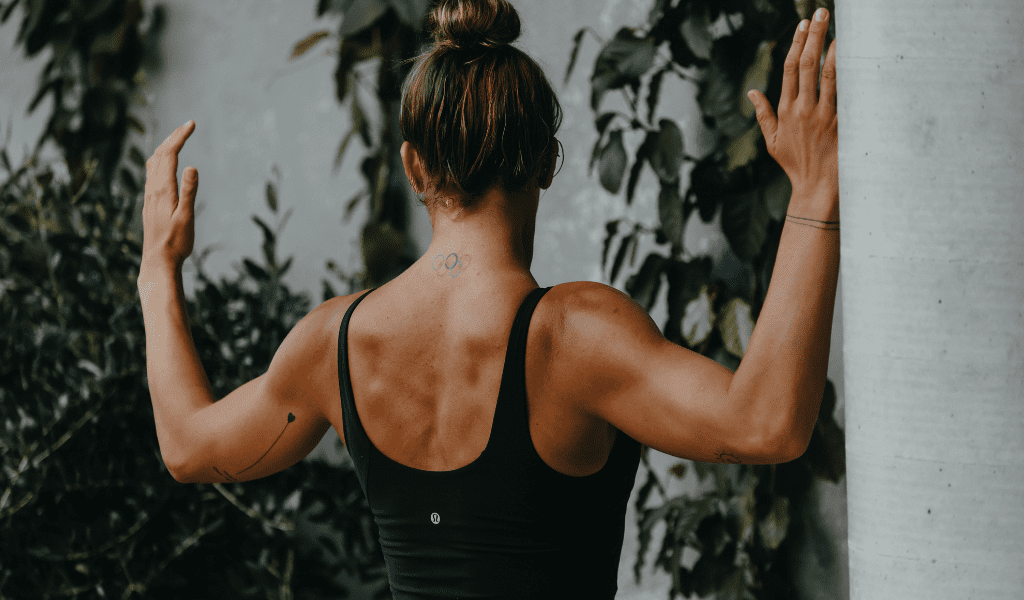Health and Fitness
Shoulder Impingement and Tendonitis

One of the most common causes of shoulder pain is impingement and tendonitis.
Shoulder impingement occurs when the Rotator Cuff (Supraspinatus, Infraspinatus, Teres Minor and Subscapularis) or Biceps tendons are impinged or squashed as they pass through the subacromial space (between the acromion of the Scapula and Humerus) in the shoulder joint. When this repeatedly occurs the tendons become inflamed and painful and this is called tendonitis.
Shoulder impingement and tendonitis can be caused by repetitive movements or lifting overhead (overuse) with faulty biomechanics. It is common among athletes in sports like swimming and tennis, and also weights and gym work; however it can also seem to occur spontaneously with no apparent cause.
In patients with this problem, there are almost always muscle imbalances present around the shoulder leading to abnormal biomechanics. Usually the Scapula is sitting in a poor position it is winged or protracted and there is a weakness in the Scapula stabilisers, and tightness in the Pec and Lat muscles. This poor Scapula position decreases the amount of space between the acromion and humerus, leaving less room for the Rotator Cuff tendons to glide through. Often the Rotator Cuff is weak too, allowing the humerus to move forward and upward in the shoulder socket, impinging the Rotator Cuff tendons further.

SYMPTOMS INCLUDE
- Pain at the front of the shoulder and increased pain with shoulder movements (especially overhead movements and abduction)
- Generalised aching in and around the shoulder at both rest and with activity
- Pain radiating from the front of the shoulder to the side of the arm
- Pain above the Rotator Cuff tendons when the arm is flexed or abducted
- There may also be sharp pain during internal rotation (ie. especially with lifting and reaching movements)
- Increased pain at night (especially when lying on the affected shoulder)
- A ‘catching’ sensation may be felt when the arm is lowered from above the head
- Loss of strength and/or range of motion
Treatment includes the use of ice and if bad enough, anti-inflammatory medication to reduce the swelling and pain.
The patient may even require a cortisone injection into the affected area. Physiotherapy may be required to improve mobility, strength and correction of any biomechanical deficits. Massage and trigger point therapy of the Rotator Cuff, Pecs and Lats are helpful as well as strengthening of the Scapula stabilisers and Rotator Cuff.
IMPLICATIONS FOR PILATES
Initially all overhead movements or shoulder positions that cause pain or impingement may need to be avoided. Arm exercises may be able to be done with the arms by the side in a neutral position eg. Flight, Biceps with the Band with arms by the side, External Rotation with the Band, Triceps with the Band). Ensure correct Scapula position and muscle activation for all exercises – really focus on drawing the shoulder blades down and back and not winging, and to activate the rotator cuff think of drawing the arm bone back into the shoulder socket (humeral head backwards into the shoulder socket) for all arm exercises.
MUSCLES THAT USUALLY NEED STRENGTHENING
- Lower Trapezius
- Middle Trapezius
- Rhomboids
- Serratus Anterior
- Rotator Cuff
While performing exercises to strengthen these muscles, be sure that there is no pain in the shoulder and start with the arms by the side. Progress as pain and strength/control allows to exercises that are performed in more shoulder flexion or abduction.
EXERCISES TO AVOID OR USE WITH CAUTION
Generally exercises which require shoulder abduction, high ranges of shoulder flexion and overhead movements can elicit pain in tendonitis and impingement syndromes. Arm exercises with high load, even in the neutral position will also usually aggravate the injury along with movements that work the anterior deltoid and pectoralis muscles. Examples include –
- Breaststroke Arms (Breaststroke Arm Preparation may be okay)
- Freestyle Arms
- Plank and Push Ups
- Tricep Circles
- Mermaid, Spiral and Prayer stretch (note that these are good to stretch the Lats but should be avoided if they actually hurt the shoulder joint)
EXERCISES TO TRY
- Inner Thigh Lift/Double Leg Lift – may need to put padding (such as a towel) under the head rather than the sore arm.
- Lower Trapezius Activation, Flight and Breaststroke Arm Preparation are all fantastic rehab exercises for the shoulder
- External Rotation with the Band
- Triceps and Biceps with the Band with the arms by the side (avoid if this causes pain or discomfort)